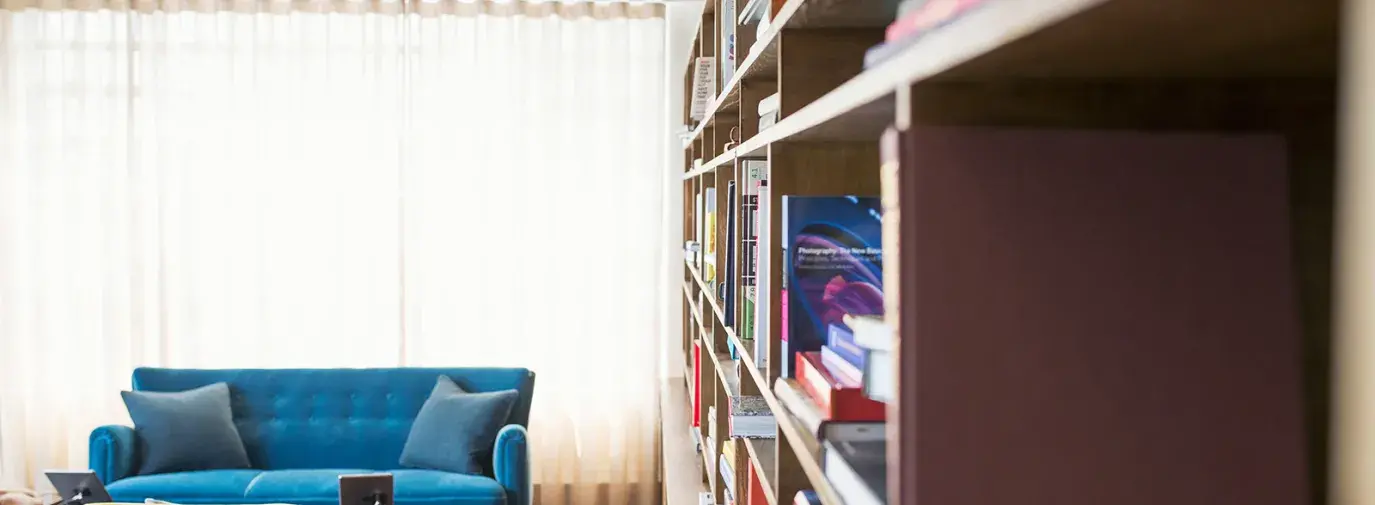
Living Room
Furniture
Most furniture is awkward to move and generally requires Aspirin to do so. Usually the endpoint is to just get rid of the thing. But that approach can be bad for our environment as even the most minimal pieces can include a number of materials that need to be disposed of differently.
First, look into donation to shelters. Some schools or universities may be able to use wood or metal pieces for various woodworking or metalworking shops. Give them a call too!
If it comes down to it and you really need to just get rid of the thing, here are a couple of responsible places to check out:
Light Bulbs
Disposing of light bulbs is tricky because various types of glass and different filaments need to be carefully recycled, or else they end up in a landfill. Figuring out what is in each light bulb is one challenge, removing the filament on your own is a skill Thomas Edison would be proud of but that’s not enough of a reason to learn how.
If you’re crafty, turning typical light bulbs into terrariums can be a fun project. The little ecosystems are an upgrade to any room and can enhance its fragrance and air quality.
Here's a zip code search to find a location that helps sort light bulbs by variety in order to most effectively recycle.
Also, Batteries Plus stores and The Home Depot have become good drop-off centers for light bulbs as well.
CDs/DVDs
There’s a lot to be said about the negative impacts of technology moving at hypersonic speeds. With most of our music and films digitized, the collection of CDs and DVDs we once thought impressive are now collecting dust.
The backs of CDs and DVDs have always fascinated me. Maybe because as children we’re taught to be fascinated by shiny objects, but the artwork on front can be even more interesting (if you’re past the phase I’m still stuck in). Whichever phase you’re in, cutting some up or pressing a rolling pin over them to create texture can make for unique looks for coffee or end tables.
However, if you’d rather not let anyone know of your secret Barry Manilow obsession, CD Recycling Center of America and Green Disk have a responsible disposal processes.
Bathroom
Magazines
These can go in your curbside recycling bin. Often, paper products can get contaminated in single-stream recycling (where all the materials go in one bin)…a great way to make sure your magazines arrive at the sorting facility in a clean state is to put all of them in to a paper bag and staple it. This will help keep the magazines from being dirtied so that they can be re-made into high quality paper!
Shower curtain
Your old shower curtains are sadly NOT recyclable. But there is good news! They can be repurposed into a variety of things: a painting cloth, a cover for outdoor furniture during the off season, an added layer under your tent when camping, or a way to keep your car trunk interior clean.
Garage
Old Tools
Find out if your community has a free tool library (a place to donate and borrow tools). If not, consider starting one with your neighbors! Tool libraries are great for saving money, community building, and encouraging self-sufficiency. If your local library doesn’t need the tools you are trying to clean out, you can donate to Tools for Self Reliance, an organization that sends needed tools to India or Africa, helping people help themselves.
Batteries
These are not recyclable and some landfills still have bans on alkaline batteries (although newer batteries have far less mercury than they used to, so your city landfill might accept them). You can take them to the hazardous household waste pickup in your community (this also goes for disposing of old smoke alarms).
Office
Ink cartridge
To create less waste, the best idea is to reuse your ink cartridges—Walgreens and Costco will refill ink cartridges, or if you are looking to discard, you can donate to Cartridges for Kids—a program that allows schools to collect cartridges and receive funding in return.
Books
You can donate these books to your local library or if the books are damaged and the library will not accept, you can recycle them in your curbside bin. Check earth911.com to make sure your city doesn’t require the hardcover to be removed, due to the glue on the book spine.
Moving
Packing peanuts & bubble wrap
These are not recyclable in your curbside bin. There are some shipping locations that accept plastic bubble wrap and packing peanuts. Call your local UPS store to determine if they will take your used moving materials. You can also reuse bubble wrap in your garden to protect plants from frost damage, or insulate your shed with it, cutting small holes to allow for ventilation.
Bedroom
Mattresses
In many ways mattresses are more annoying to get rid of than furniture. It’s well known that mattresses left on a curb tend to disappear…eventually. Properly disposing of them, however, is much safer for the environment.
Plug in your zip code to Bye Bye Mattress and they’ll likely have a facility nearby that can assist you.
This guide has information about donations near you, or recycling them if they're very worn.
If you’re in DC, these good folks will come to you AND do all of the heavy lifting.
Old linens/Bedding
These are important items that eventually we all replace; usually through a move or the sudden realization that Spiderman sheets are no longer appropriate because you’re 35. In any case, getting rid of bedding and linens can seem weird. It isn’t, and here’s why: Thee are so many options to repurposing or donating these items! These can be used as patches for clothing (so you can still support Spiderman, just more discretely), can become quilts of their own, or cut up and used as cleaning rags. In addition to donation places like the Salvation Army or Goodwill, this site takes bedding and gives it to the homeless. Or you can cut out the middle man, drive around, and hand them out to those in need. Also, many animal shelters can put most any piece of fabric to good use
Kitchen
Pots & Pans / Appliances
A lot of pots and pans are a combination of metal, Teflon, and/or ceramic. This stuff can be hard to dispose of and if tossed into a landfill, ensuring it’ll be at its most toxic when left to entropy.
If you’re handy or artsy enough, removing handles and adding flowers, rocks, or anything else of your choosing can transform some pots or pans into centerpieces.
However, like with bedding, these can be donated to a variety of shelters. A lot of soup kitchens, homeless shelters, and women’s shelters need pots, pans, and appliances to help maximize their service. Also, you can find other recycling options here.
K-Cups
OK, I don’t want to make coffee lovers feel terrible, but these little machines have created a disastrous recycling problem. Even though Keurig is promising to make the K-Cups out of 100% recyclable material by 2020 (why weren’t they from the beginning?), that still leaves us with four years and the average American 2.1 cups of coffee per day. That math adds up to a number that is very, very high.
So, until then, however, the millions in use every day pose a large problem. It can be curtailed by looking for areas close to you which recycle #5 plastic. Or check with your nearest waste management facility to see if they accept #7 plastic (sadly, most don’t). However, once you have a minimum of 50 of these little guys, Keurig has a recycling program which allows you to send them back so they can dispose of them properly.







